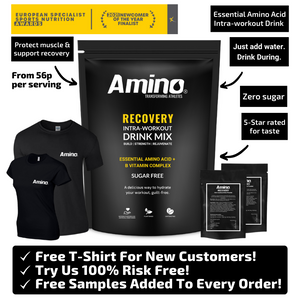There is a sport out there for everyone.
Athletes come in all shapes and sizes. Big, small, tall, short.
These inherent genetic variations may also play a large part in benefits or drawbacks in our movement mechanics which can potentially make us great or hinder us in particular sports events.
Alongside these variations in body shape, our actual energy systems and metabolism can be split into two main camps, and these can be helpful for us to look out how we can fuel our workouts optimally.
These are endurance training and strength training, both of which have their own collections of variations.
But what are the nutrition factors that we need to consider to fuel ourselves appropriately to make sure we are getting the best recovery and adaptation which in turn will allow us to make progress over time?
If your training for a particular sport and have basic knowledge, then this video is one for you. For more advanced athletes, we will have more in-depth content coming soon.
What is fuel?
So firstly we need to understand what fuel is and then we can get into some principles for us to work by.
Everything we eat or drink is some sort of fuel and calories are a measure of that energy that you put into your body just like you would with litres of petrol in your car.
The main difference is that our metabolisms can derive fuel or energy from our three macros nutrient sources, carbohydrates, fats and protein. They all act as fuel.
This is where things start to get more complex as the energy that each of these supplies has a different energetic value and an effect on the body's structures.
Just to confuse us some more we also have different storage tanks for each type of fuel so it not super easy to grasp to begin but you will get there.
You have to view your body's ability to access energy in a hierarchy and this is organised in the form of the macronutrients we mentioned, carbs, fats & protein.
Carbohydrate is at the top and is your main short term fuel source and is the most readily available with stores in the muscle and liver.
Fat comes next in the middle of the pyramid and is a slower burning fuel source, this stored around your organs or underneath your skin and is your medium-term fuel source.
Finally, you have your protein store which is actually your body's tissues like muscle and organ, this store is not readily available and it's not ideal if tap into it unless in survival situations.
Fueling for an event
If your goal is fueling for an event in which you want to improve performance the principle you need to take away today is that fuels are burnt in different percentages at different heart rates.
The rule of thumb here is that the more intense your work out in terms of heart rate, the more carbohydrate or short term energy you're going to need to have onboard, to improve your performance. So any sprint or higher intensity effort or weight circuits will be mainly fueled by muscle carbohydrate called glycogen and it massively helps to enhance performance.
The less intense your work-out the more fat will be your main fuel and so you will be less reliant on carbs. Although in most sports there will be a mix of both of these elements, for example, a cyclist 'kicking' or hitting a mountain climb during an event will suddenly increase the power needed, so more carbs will be burnt. And in the opposite, the aerobic part of a sprinter's warm-up isn't at max effort or full power, so they aren’t independent of each other.
This being said, we are always looking to find balance and harmony in our bodies, and there is nothing different here. Too much or too little carbohydrates, either way, will affect performance so it is important for you to do some more research and figure out how much you need in a practical sense so you find this sweet spot.
Alongside performance, we also have to take into account the body composition work the athlete needs. This will involve adding in or taking out certain elements at specific points of the year to change the body's structure.
This will normally be done in the off-season or well away from the competition period so it's not interfering with performance. The key here is to look at your program and see what needs to happen and when. A little organization and planning can go a long way.
Key takeaway
The real takeaway of this lesson is that one size doesn't fit all. It's going to be very specific to your needs and goals. We have to be careful and smart with our training and always be in a continuous state of learning. Ideally trying new systems in our out-of-competition periods then measuring the results and implementing them in the race season. That's how you strike the gold.
Are you making good progress towards your goals or do you think you fuelling could need some tinkering? Drop your thoughts and questions over to us at info@drinkamino.com and we will do our best to answer them.






